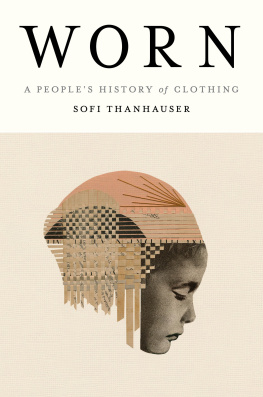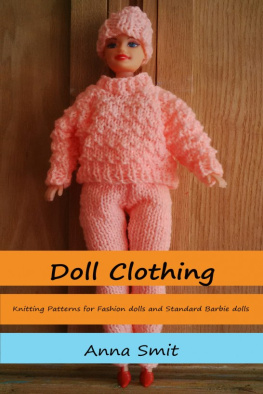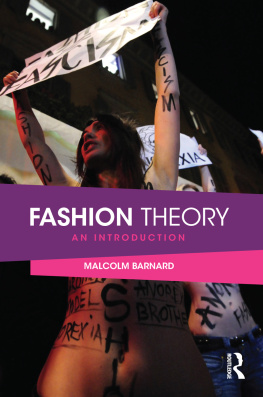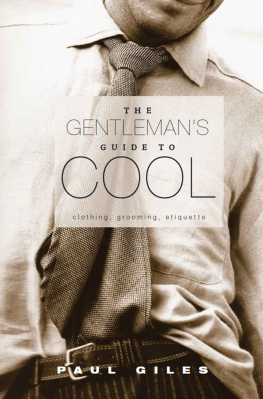THE THEORY OF
GARMENT-PATTERN
MAKING
A TEXTBOOK FOR CLOTHING DESIGNERS,
TEACHERS OF CLOTHING TECHNOLOGY,
AND SENIOR STUDENTS
BY
W. H. HULME
Sometime Head of the Clothing Department, Leeds College of Technology Lecturer in Industrial History, Dudley and Staffordshire Technical College
AUTHOR OF
The English Tailor: A Short History of the Tailoring Trade;
The Principles of Dress Design, etc., etc.
FOREWORD
IN this volume I deal with the principles which underlie the making of garment patterns. A method of applying principles has for many years been called a system by designers in the various branches of the clothing trade. In the past the garment industry has not lacked systems: some of them have been based on the idea of human proportioni.e., they have been grounded in the size-card, which divides humans into types and sizes, differing from or approximating to accepted standards of physical proportion. Other systems are based on the unique requirements of the individual, human figure, having form and size peculiarly its own, and unrelated to all other forms.
The great garment industry, producing in bulk by factory methods, has been reared on the first point of view: the bespoke or merchant tailor bases his practice on the second.
This work deals only lightly with methods or systems: they rise and decline, and give place to others which take the making of a garment pattern a little nearer to certainty and finality. In a subsequent volume I shall deal with the systematic application of the basic principles stated here: in the present work I have set down the theory which lies behind all systems, and have treated measurement and its application in a fundamental way. The derivation of constructional scales and the application of scale quantites are dealt with in a new and clearer light: the pattern designer will thus be able to place his fitting points and arrange his garment parts with intelligence and confidence, and make his own system to his own requirements.
In the past, more emphasis has been laid on the mechanical application of principles by systems of pattern-making than on a clear understanding of the principles themselves. Nearly half-a-century spent in the retail and wholesale sections of the trade, and in teaching the technology of the industry, has convinced me of the need for a plain statement of the basic laws of human size and shape, and of their application to garment patterns. I make the assumption that these laws are a unity; that they apply to all garments and to both sexes. Size and shape exist in man, woman and child; in the old and the young; and all garments are subject to these major demands.
I wish to thank Alderman Elliott Young, Merchant Tailor, and Sidney Fryer, Director of Drescott Clothes, for reading over the manuscript and proofs and for making valuable suggestions.
W. H. H.
Dudley and Staffs. Technical College.
1944.
CONTENTS
CHAPTER I
THE HUMAN BODY
WHEN you employ persons to dress you, ask them, first, where on the body the measure ought to be placed, and to describe your figure as to carriage of involuntary form. If they cannot name and fix the anatomical points for measurement, nor intelligibly explain your figure, whether normal or abnormal in carriage, and in what parts, then they are deficient in the very preliminaries of the undertaking.
... it is evidently absurd to attempt to cover correctly even a simple form, as a cube, without a knowledge of it: and how much more absurd to attempt to dress or drape the human form correctly and tastefully without such knowledge (Wampen, Anthropometry, III, 910).
The student of clothing should possess a good working knowledge of the parts of the body, the various types of figures, physical proportion, the effects of movement, and the relation of various fitting and draped garments to the body.
The Parts of the Body
As to the naming of the various parts of the body, no hard and fast rules may be imposed. Where a common name has, for any length of time, served to describe unmistakably any important physical feature it would be wise to retain and use it. For example, there is no good reason why the nape of the neck should be known by any other name; nor need the knee-cap, elbow and collar bone be described in Latin words.. Tradition should count for something in this matter; and so long as it is clearly understood by all concerned that certain names relate to certain parts of the body, no difficulty should arise.
There are, however, parts of the body which are of the first importance from the point of view of clothing, which have not yet acquired a fixed recognised English denomination and are referred to by all sorts of odd names. A good instance of this is the sternal notch, which has been called the front-of-throat point, the pit of the neck and other clumsy terms. Again, there seems good reason why certain muscles of the upper arm and shoulder, often troublesome to the tailor, should be known as biceps, triceps, deltoids, etc.: there are no popular names one could use to describe them. The chief thing to be aimed at is definiteness; and whether the name of a part is that given to it by the anatomist, or whether it is an expressive term that has become generally accepted by usage, does not matter too much: what is important, however, is that teacher and student shall recognise the part concerned by the name that is used. This necessitates a common nomenclature, simple yet sufficient, and used in all theoretical and practical references. The object of this section, therefore, is to deal with the body and its parts, the skeleton and the muscles, and to give a working vocabulary. Every reference should be checked by the student with the plates and diagrams.
The Bone-Structure
The form of the body is determined by (1) the bony skeleton and (2) the overlying muscular system. The general configuration of the body is mainly determined by the bone-structure which supports the body vertically and gives rigidity to the trunk and limbs. In certain parts the bone-structure lies deep under the surface beneath a mass of muscular tissuee.g., the seat, where the massive gluteal muscles give to the part a shape different from that of the underlying bone-structure. In other parts the skeleton lies near to the surface and is merely overlaid by a thin layer of muscle. The shoulder (made up of the blades in rear, the upper ribs in front, and the collar bone) has its form mainly determined by these bones. The muscles give the rounded and agreeable form to the human figure, but... they only give a finish to that form which the bones have originated. Taking the figure as a whole when covered with muscles, the rough outline is similar to that of the skeleton, though in detail, the corresponding parts are somewhat different. The form of the body, then, is determined by the bony skeleton and the muscles attached to it. These are subject to a number of influences which determine the attitude of the body, and which will be noted in their order.
The body may be divided under the following headings:
(1) Head. (2) Arms.
(3) Trunk. (4) Legs.
When dealing with physical proportion it will be necessary to say something of the head: as a part of the body to be clothed, however, it has little interest for the tailor. The trunk of the body will claim our attention.
The spine, which supports the trunk, consists of small bones (vertebr) which are so combined with each other that the whole spinal column is flexible. In the normal it describes a slight outward curve downwards from the nape, then inwards to the waist, and again slightly outwards below the waist.









